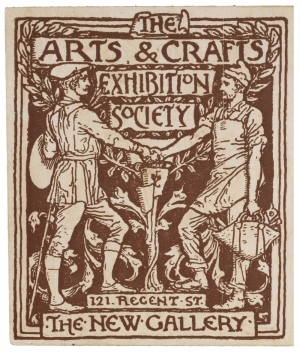The Arts and Crafts Movement was regarded as a reaction against industrialisation and what was viewed as the impoverished state of the decorative arts at the time. The Movement was a strong advocate of traditional craftsmanship using pure and simple forms. It was strongly influenced by Victorian interpretations of medieval and folk styles of decoration. The Arts and Crafts Movement's influence can be seen in a wide range of items, from books, buildings, ceramics, graphics, interior decoration (especially wall paper), metal work, textiles to woodwork. William Morris and his daughter May Morris were also deeply involved in changing the then current styles of textiles and embroidery (especially Berlin wool work) by advocating, among others, the Art Needlework movement.
Between about 1880 and 1910 the Arts and Crafts Movement spread from Britain to the British Empire, as well as to many parts of Europe, Scandinavia and the USA. It also became an important movement called Mingei in Japan, which developed in the 1920's under the inspiration of Soetsu Yanagi (1889-1961).
See also the TRC Needles entry on Mrs. Grace Christie.
Sources:
- CUMMING, Elizabeth and Wendy KAPLAN (1991). The Arts and Crafts Movement, London: Thames & Hudson.
- NAYLOR, Gillian (1971). The Arts and Crafts Movement: A Study of its Sources, Ideals and Influence on Design Theory, London: Studio Vista.
V&A online catalogue (retrieved 28 June 2016).
GVE

